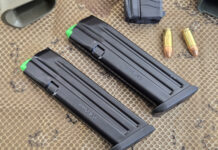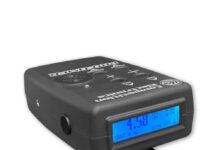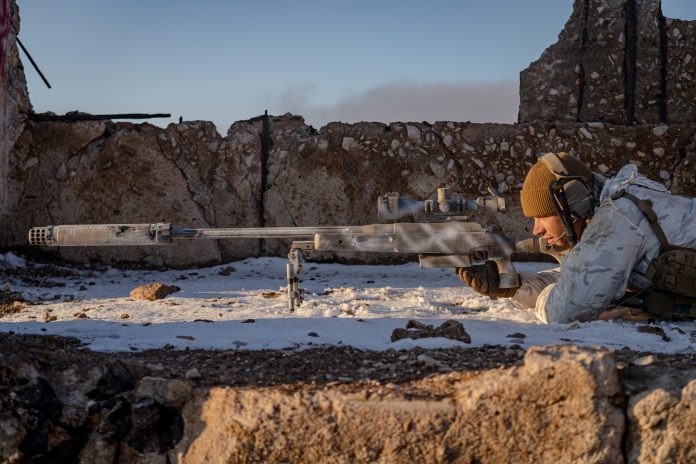
An often-asked question by newcomers to the AR-15 space, is “can an AR compete with the accuracy of a bolt action rifle?” In all honesty, the premise of the question is a bit ridiculous.
While the AR-15 and clones have come a long way, they were never meant to compete with the accuracy of a bolt-action firearm.
Both guns are built for separate, strategic uses. It says a lot however, that you can simply attach an upper receiver conversion kit to an AR-15 and improve accuracy substantially.
While a replacement upper receiver isn’t the only thing you’ll need to significantly increase the accuracy potential with an AR-15, it can be proof enough that the modularity and market strength of the component parts for the AR-15 are such that you really can make vast improvements on what used to be a mainstream, relatively accurate firearm, and now has the potential of shooting sub minute-of-angle easily.
The Benefits of a Semi-Auto Platform
Again, this flawed logic that allows so many to ask whether an AR-15 can compete with a bolt gun doesn’t consider the other benefits that you get from using an AR-15 or a semi-automatic firearm in general.
But this isn’t an argument about which gun is better for which situations – it’s an article about the potential to compete favorably “all-in”, with a bolt-action firearm for things that perhaps the AR-15 was never intended to be used for.
For example, over the past decade or so the AR-15 has found quite a market in the hunting industry. Ordinarily a small caliber centerfire rifle wouldn’t have been able to span the huge spectrum of game targets in North America.
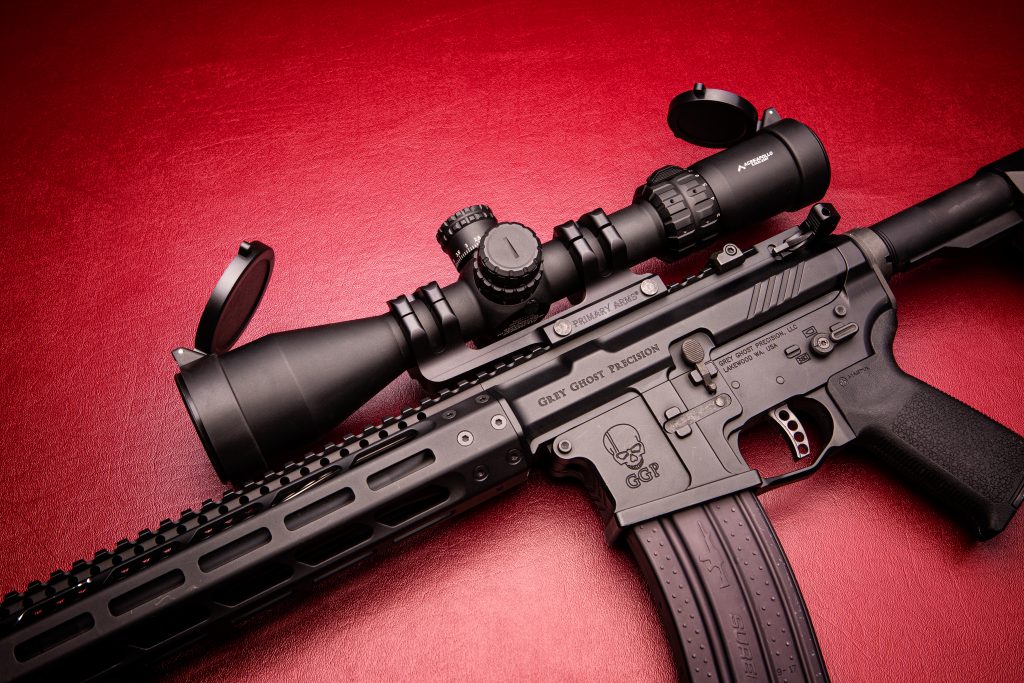
But the AR-15 has done so, of course thanks in part to such mainstream adoption and innovative ballisticians.
In the rest of this article, we’ll talk about things that have to do with accurizing the AR-15 and being competitive against other styles of firearms.
While we’re not ready to say that an AR-15 can compete one-on-one with a bolt-action rifle at long distances, the AR-15 has a lot of room for growth and many innovators in the AR-15 marketplace have made it their job to prove that it will be possible someday.
Just look at the rise in SASS platforms.
Do you need to compete on the most stringent accuracy requirement in a static way?
When you deep-dive into the concept of accurizing an AR-15, the question that should really be asked is whether you need to compete with a bolt action rifle on some static variable. Are you trying to compete with a bolt-action, say on Benchrest activities?
If so, it might not make as much sense as, say, competing with a bolt action rifle on large game animals for hunting.
The same might also be true if you’re trying to compete with a bolt-action hitting steel targets at 600 yd that measure more than a foot in diameter.
An AR-15 is going to be able to compete favorably, if you put the right components, time, and effort into building the firearm for doing so.
That’s the real benefit of the AR-15 platform: it can be many different things and do them well. The bolt action rifle only does one or two things well. It is always a specialist.
And competing against the bolt action on accuracy or simplicity at the granular level simply isn’t going to happen now. Bolt Actions are the star of the show if those are your priorities.
So, the real question again becomes, “Do I need to hit a game animal in a 13-inch area of their body consistently, or do I need to hit a quarter minute of angle at 400 yards?”
One task is quite reasonable to do, the other may not be so reasonable on an AR-15 – depending of course on how you build the rifle.
What are you trying to accomplish with the accuracy of your rifle? This will help to dictate how finite the accuracy needs are
So, what are you trying to do with this accurized AR-15?
Some obvious places where the AR-15 can be built to keep up, and even compete quite favorably from an accuracy perspective might be as follows:
- Hunting large game
- Hunting intermediate game at intermediate ranges
- Varmint hunting – depending on the target and the cartridge upon which the rifle is built
- Target’s that don’t have high scrutiny on group size, like steel or static targets without bull’s-eyes
- Shooting under 400 yards
- Anti-materiel or anti-personnel purposes in a law enforcement or military capacity, high precision at ranges under 250 yd
- General home defense purposes
- Large property or Ranch purposes
- Depredation
- Competition shooting where hits on target count more than group sizes
- Where budget is not an issue
Let’s explore some of these concepts further, to determine how it is that we can fairly stack an AR-15 up against a bolt gun.
We believe the average reader might be quite surprised how well an AR-15 built to the right specifications can’t compete against something so purpose-built as an accurized bolt gun.
Hunting accuracy compared between an AR and a Bolt gun
As stated above, when hunting, the sweet spot to dispatch a game animal may be as small as 6 inches and as large as 15 inches, depending on the size of the animal. There’s a lot of room in that breadbasket, or even that headshot, if necessary, for accuracy deviation.
And that’s the matter that is at the heart of the debate: why do you need a sub quarter minute of angle potential if you only need to consistently hit a 13-inch target somewhere within its radius at 200 yards?
For tasks like this, a baseline AR-15 out of a factory will be plenty accurate enough to take this game animal.
The same is true for other game targets, including smaller targets, even at much greater distances. For example, one might be able to put on an upper receiver that’s geared towards the .224 Valkyrie and shoot a varmint at 400 yards that’s the size of a groundhog.

The extreme velocity and inherently good accuracy of the cartridge may be enough to carry you through that task consistently. The projectile doesn’t have enough time to manifest significant bullet drops or windage concerns.
Of course, if you extend that distance out to 800 yards, you’re going to need to be in a different class of projectile, or a different class of cartridge.
This is also where the AR can shine. Instead of using an AR-15, moving up to the larger AR-10 or 308 Winchester AR pattern, one can easily achieve this kind of accuracy. How does one achieve this kind of accuracy “easily”?
By utilizing a different class of cartridge, including something like the 6.5 Creedmoor. Out of a standard AR, built on the larger 308 platform, with a substantial barrel and the right loads, one can easily get close to half a minute of angle potential.
That said, achieving half minute of angle is a feat in any firearm, even a bolt gun, where many factory offerings don’t even offer that kind of accuracy out of the box.
So, with enough of a mindset, the appropriate willpower and deep enough pockets, anything’s possible with the AR platform when it comes to hunting accuracy.
Competition accuracy potential compared between an AR and a bolt gun
Shooting competitions have been a mainstay for AR-15 shooters in the past decade. They’ve been able to stay competitive because the AR-15 isn’t prioritized in competitions that are measured by the inch.
Rather they feature heavily in competitions that measure by the ability to hit a target at a static distance of a static size within a static time frame.
This is especially true when multiple targets need to be hit at distance in short sequences. In fact, the AR-15 has become so popular in competition circles because it is semi-auto and the ease of getting back on the target make it super simple to out-compete a bolt-action firearm.
Of course, you’re not going to take a bone stock AR-15 out of the factory box and put it up against a heavily tuned bolt action that’s been built on a monolithic chassis, bedded properly, accurized, and tuned with loads to hit sub-minute-of-angle or better at long ranges.
These guns were built to do different things.
That said, taking some of the concepts from the bolt action rifle world and putting them into the marketplace of the AR has allowed new innovative thinking on the lines of accuracy to come about.
Now there are factory-matched high-tolerance sets of receivers with substantial barrel attachment provisions that allow for heavier, higher-tolerance barrels with greater length and bespoke rifling twist rates and chamberings.
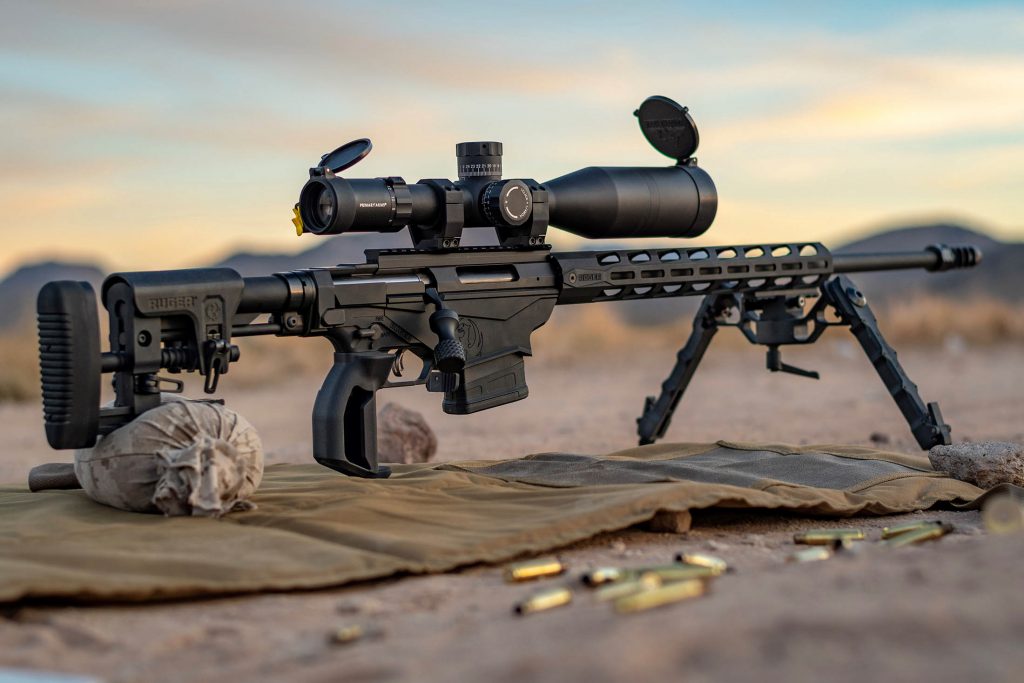
Gone are the days that you could only find a 16, 18, or 20-inch barrel in a light configuration or an HBAR. A lot has happened since the days of when Colt ruled the AR-15 landscape.
Built on a select receiver, utilizing AR-15 or AR-10 components, one can now build a gun with a one-off bespoke built barrel in their chosen caliber. What you can do now with the proper tooling and component parts is significantly more than what you could do even five years ago.
On the back of the introduction or even re-emergence of cartridges that push the agenda forward for accuracy, and still function and fit within the confines of the AR-15 platform, pretty much anything is possible competition-wise if you have the skill set, the time, and the money.
A final word about competition shooting with the AR-15 or AR-10 – any reasonable shooter is going to opt for a bolt-action firearm where that gives them the greatest competitive advantage.
No one goes into a competition expecting to lose because they need to hit a certain static variable of accuracy and can’t compete by means of the hardware they brought to the competition.
Shooters aren’t out there going into the realm of the bolt action, carrying a bone-stock AR-15, and trying to disrupt a quarter minute of angle at 600 yards or more. Competent shooters make transitions when they need to maintain competitiveness.
Specialized accuracy needs regarding the AR platform
Where should you look at, component-wise, if you are trying to make a highly accurate AR-15 or AR-10?
Below are listed in no specific order some of the component parts you want to pay particular attention to ensure that you have the right kind of accuracy potential.
- The barrel should be the appropriate length, built to the appropriate dimension, chambered properly, and rifled to meet the load expectations that you have for shooting out of the firearm
- The bolt and carrier should be properly fit, and the upper receiver channels should be lapped and honed to ensure concentricity
- A proper trigger group, adjusted to the shooter’s needs should be a focal point
- Balance is incredibly important in a competition or heavily accurized firearm. The AR-15 and AR10 tend to become quite front-heavy making it difficult to pull off the “consistency” component of an accurized rifle
- A rock-solid front-end and bipod are necessary
- If a bipod is not available or not allowed in a specific setting or competition, the balance of the rear part of the rifle becomes more important.
- The upper and lower receiver should be mated together properly with close tolerance fitment if possible
- The right optic and a lot of practice and experience on the range with the loads you plan on shooting through the rifle can be the game changer
The above bullet points shouldn’t push you away from prioritizing other aspects of your build on the AR platform when you’re going for accuracy, however these tend to have the biggest impacts immediately on the accuracy potential of a given firearm within the space.
Cost concepts when comparing an accurate AR to an accurate Bolt Action rifle
It should be abundantly clear by now, that accurizing an AR-15 to put it on-par, or at least in a competitive realm with a standard bolt action straight out of the factory, which generally will shoot sub minute of angle, isn’t particularly expensive. However it is relatively expensive compared to the bolt action.
When trying to move into the realm of half minute of angle that’s where things get quite a bit more expensive, and you can generally expect to spend at least two and a half times the cost on an AR-15 to get it to 1/2 minute of angle that you will have to spend on a bolt action rifle for the same accuracy.
If your bolt gun costs $1000 out of the factory and shoots ½ MOA, it will cost you more than $2,500, generally to build an AR that can do the same, performance-wise.
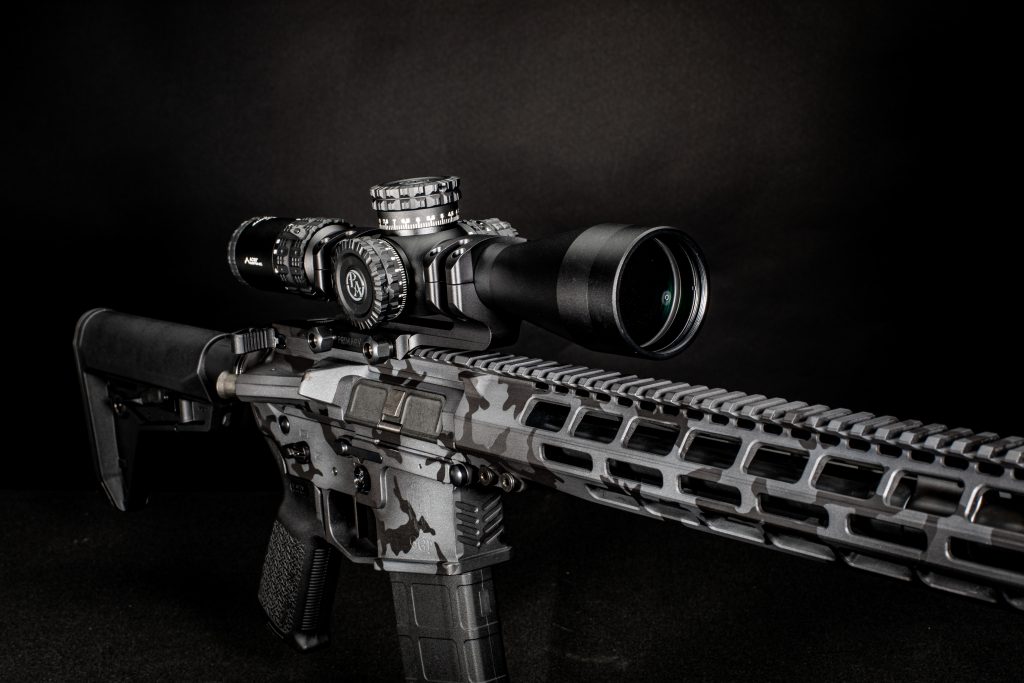
You may be in over your head if you would like to be in the quarter minute of angle class with an AR-15. An AR-10 is significantly easier to get into the quarter minute angle arena, however even it will cost 4 or 6 times as much as it costs to get a bolt action into the quarter minute of angle arena.
It should be mentioned also, that to build a consistently performant bolt action rifle in the quarter minute of angle category is itself, quite an endeavor. Single hole targets are possible as outliers, with regular bolt-action builds, but to consistently build a quarter minute of angle capable bolt action rifle is difficult.
To build a quarter minute of angle AR-15 or AR-10 is substantially more difficult than that. Further, an AR-10 will be less expensive to get to ¼ MOA than an AR-15.
When we say an AR-10 is easier to build a quarter minute of angle gun upon, it’s because of the cartridge availability and the longer action, which utilizes a heavier powder charge to compensate for some of the ballistic inefficiencies that are inherent in shorter cartridges with smaller projectiles.
With some of the newer cartridges on the market, like the 6.5 Grendel, the .300 Ham’r, and the .224 Valkyrie, among others, it is possible to shoot a quarter minute of angle, if you want to, and are within reasonable ranges, say under 350 yards.
Even then, this will be an expensive endeavor, and 350 yards would be at the extreme range of capabilities to keep those stringent accuracy requirements.
How accuracy improvements correspond to increasing weight and other concerns in the AR platform
Another concern the AR-15 or AR-10 will have other than cost and balance issues, is that it’s going to weigh more than a comparable bolt action.
Because of the build style of the AR-15, the fact that it’s made from two separate halves, and the inclusion of aluminum as the rigid central architectural structure, you lose the rigidity you might otherwise have in a bolt-action style rifle.
To compensate for that, each component part must be built to a separate rigidity standard, that is higher than that of the component parts of the bolt action, outside of its monolithic chassis.

When we refer to “monolithic chassis” rather than specifically talking about new takes on fully machined bolt action chassis, we refer to the idea of a stock and the integral pillars or bedding styles that allow the placement of the action into a monolithic structure, rather than something marketed as being built monolithically.
As a final note, in addition to a heavier weight rifle to achieve the same types of accuracy requirements, you will probably also find that at times, because of extreme demand, it is difficult to source certain accurized products, because demand is such that a wider swath of the market is contemplating accuracy style builds with the AR-15 and AR-10.
At the same time the makers in that space are significantly fewer than the mainstream component part makers. As the market matures and more competitions are shot well with an AR platform, and as hunting becomes a more central focus for the AR market, we will see more makers devoting more time to making more accurate parts.
Conclusions about competing from an accuracy perspective on an AR, with a bolt action rifle
To sum up: if you want to build an AR-15 or an AR-10 that’s as accurate as a bolt action – it’s possible.
What that means however, still needs to be prefaced by the user. You aren’t going to compete 1-to-1 with a bolt-action in certain endeavors. You won’t be shooting benchrest with single hole targets at 600 to 800 yards anytime soon with the AR-15, generally, even if you spend a bundle on your rig.
It simply isn’t built with the integral rigidity needed to compete with purpose-built bolt guns for that endeavor.
However, you can easily compete in the field on game targets. It’s been proven that you can also compete in competitions, where group size is deprioritized against rapid shot placement and total target hits.
What you will run up against, and the caveat when trying to accurize the AR-15 currently, is that it will cost you a lot more, the firearm will weigh more than a comparable bolt action for the same accuracy level, the sourcing of parts will be more difficult, and you’ll have your work cut out for you.
A final note: the AR-15 has come a long way. It’s also got a lot more room for growth than the bolt action rifle. Now is the time to start exploring if building a highly accurized platform-specific AR-type rifle is for you.

